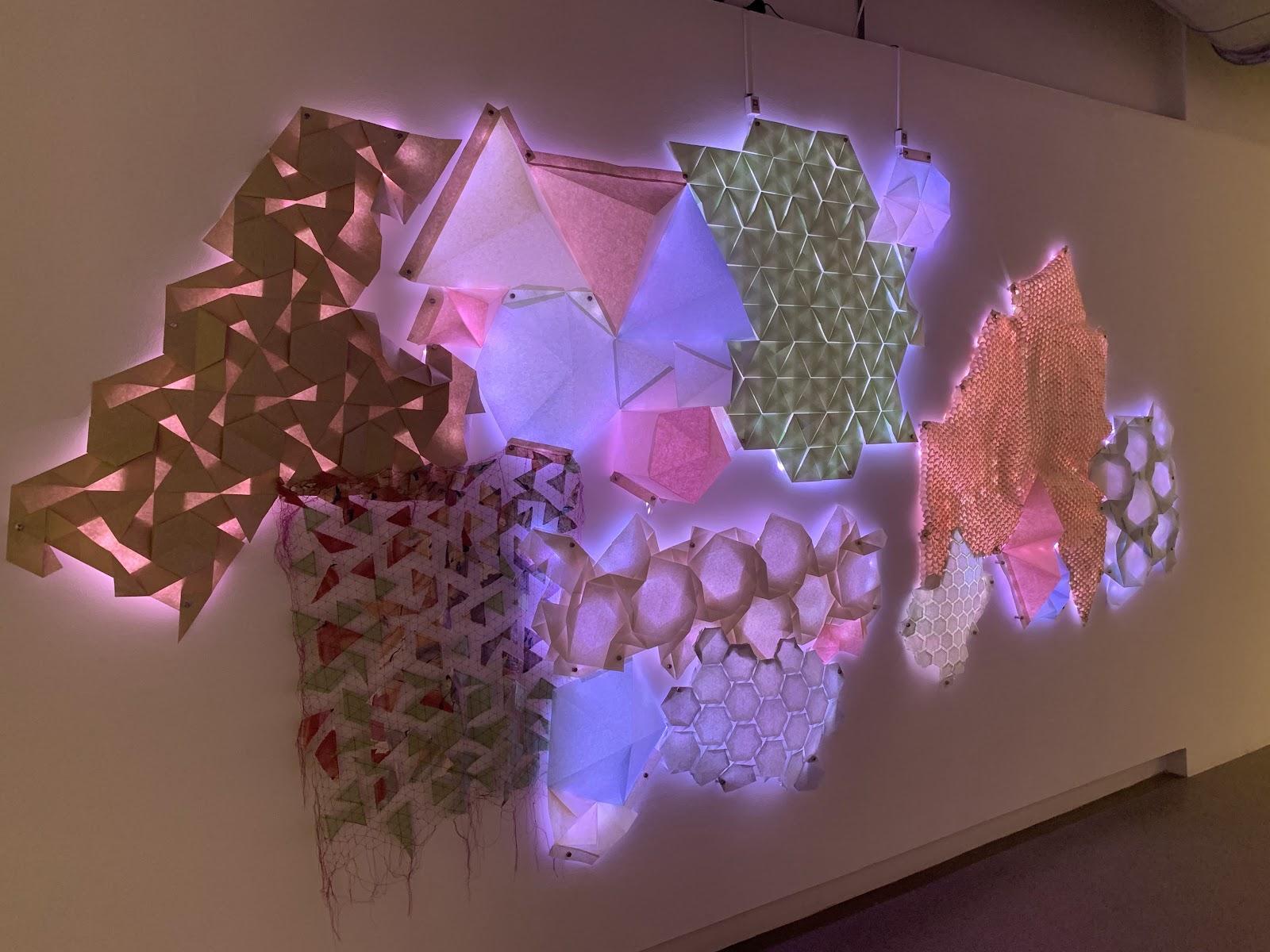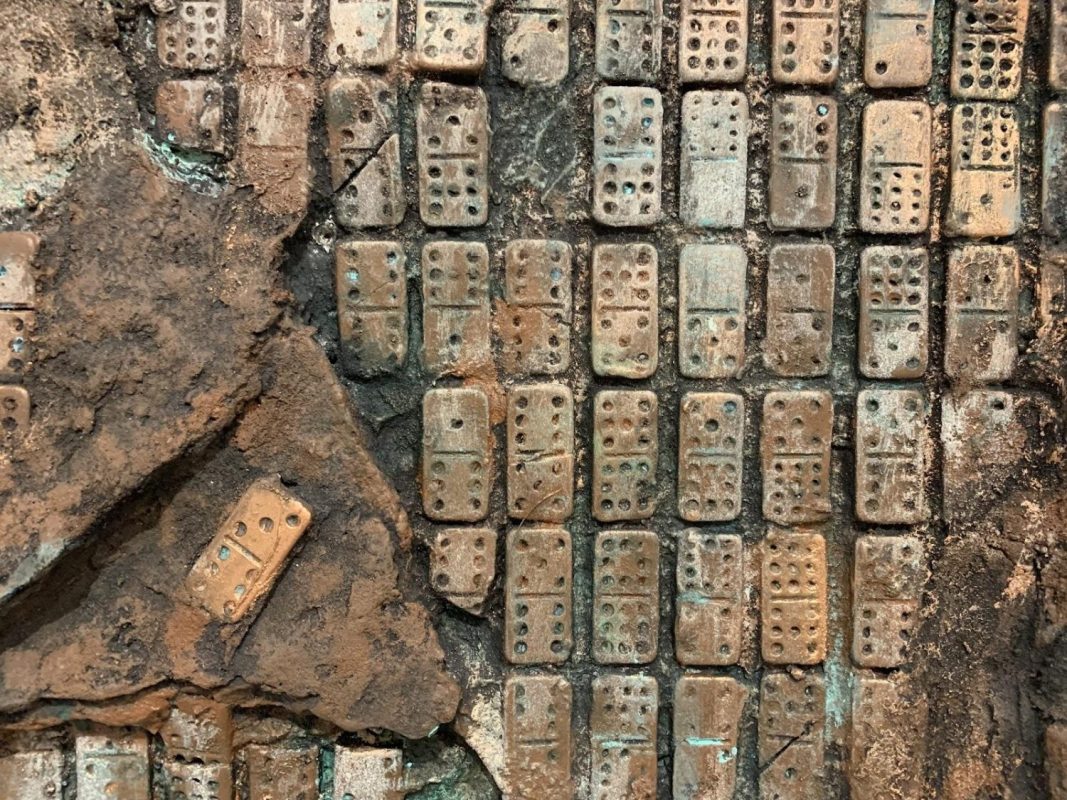The Graduate Exhibition at the School of the Art Institute of Chicago is a mind-bendingly inspirational show, with 110 artists from across the globe representing the fine arts, object design, fashion and architecture. It’s springtime in Chicago and new beginnings (and a modicum of warmth) are in the air, so head on over before it closes on Sunday.
The SAIC is consistently ranked one of the top art schools in the country. Founded as the Chicago Academy of Design in 1866, it changed its name to the Art Institute of Chicago in 1889. Georgia O’Keeffe, Claes Oldenburg, Thomas Hart Benton, Ed Paschke, Cynthia Rowley and David Sedaris figure among its alumni — it’s a true gem of the international art world, right here in the City of Broad Shoulders.
I attended the opening reception on May 13, where I viewed the show and met some of the artists. While it’s difficult to pin down themes connecting the work of 100-plus independent spirits, a few bubbled to the surface: our evolving relationship with nature, environmental change, technology and artificial intelligence, mental health challenges and social and political disenfranchisement.
In a field as subjective and personal as art, the best I can do is to share what resonated for me. There is, to be sure, something for everyone at the Graduate Exhibit.
What Are the Big Four American Cities, Really?
New York, L.A., Chicago and…? I know what I’m picking.Fine Arts

Just past the official entrance on LL1 is a small alcove showcasing the eye-catching screen-printed work of Reham Mohamed. To hear Mohamed explain it, she’s exploring the way that art comes from nothing, becomes everything and can become nothing again, as well as the transitional spaces between these states. It’s a worthy introduction to the brilliance on display throughout.

Overall, the Fine Arts gallery is a feast for the senses, with video installations, towering and sprawling sculptures, immense kites, bulbous costumes, brightly colored furniture, paintings, interactive physical spaces and more. Amid it all, I found myself arrested by Katie B.H. Wolff and Anne Skaug’s “Prairie Poetics,” an installation of ephemera gathered from Middle America: a large quilt and a small walnut dresser, plaid work shirts, photographs of horses, and rectangular white pots filled with prairie grass. It reminded me of my own family and their modest life in rural Kansas generations ago.

Florence Woolley’s video installation invited viewers to step up onto a platform and don headphones to hear the story of the Temple family, which owned a Jamaican plantation and were involved in the establishment of the Royal Military Academy in Britain. I don’t know if these stories were factual or partially factual or not at all factual (a later Google search was not definitive), but the work successfully evoked themes of imperialism and conquest.
Other highlights included a giant, hand-dyed ikat textile created with a floor loom by Qinnan (Rivers) Zhu; Janhavi Khemka’s gorgeous woodcut print, “My Room As Hell,” which was overlaid with animated projections; a mixed-media piece by Julian Tyus’ that looked like dominoes unearthed in an archaeological dig; and Stella Moon’s dreamy and brightly illuminated work of geometric paper, called “Rest Area.”




Meiqi Zhang examined the relationship between people and plants by creating a way for the latter to take revenge on us. I asked her about the interface she’d designed, and she invited me to try it. In a few moments, as she over-watered the plant, my forearm was twitching with electrical impulses. In the future, Zhang hopes to deploy similar technology on farmland, using this larger canvas to raise awareness of environmental degradation.

I was similarly drawn to the humor of Juan Eduardo Flores’ work. For “Walking Poems,” Flores navigated city streets with the help of a handheld viewing contraption, which displayed walking directions printed on dissolving paper. The printed letters separated from the paper and then reorganized themselves in a new order — creating the resulting “poem,” comprised of new words and random concatenations of letters. In another work, he synchronized video taken from within his mom’s purse with videos of shooting stars and other stellar objects — the interplay of the micro and macro perspectives was deeply compelling.


Back in the street level gallery, Minmin Han’s “Zhao Di” contemplated what the artist describes as a “long-standing phenomenon in China: the preference for sons over daughters.” The title of the piece means “invite younger brother” — paradoxically, a name given to Chinese girls. Her expansive sculpture incorporated silicone rubber breasts and fetuses, and fishnetting overlaying a video depicting a drowning, to chilling effect.

Design Objects
On LL2, design students reimagined urban renewal, Martian development, innovative toys and more. Two projects in particular resonated because they tackled subject matter dominating headlines these days. Mariam Bazzi’s “Don’t Panic” showcased three products intended to help people struggling with anxiety to manage their conditions: tactile bracelets, aromatherapy rings and an inflatable vest with hot and cold inserts, meant to regulate anxiety. All were beautiful and discreet.


Tianxin Li’s cat-shaped table lamp was created using AI, with prompts for ChatGPT resulting in a myriad of options that were then winnowed down by Li and then finessed into a captivating item for a child’s room. Li’s work contemplates a (not-distant) future where many designers collaborate with AI on both commercial and purely creative endeavors. It’s a particularly thought-provoking idea to take on board while walking among the brilliant creations of these graduating artists. For now, based on the SAIC Graduate Exhibition 2023, human intelligence seems to be prevailing with ease.
SAIC Chicago Galleries at 33 E. Washington Street opened on May 12 and runs through May 21.
This article was featured in the InsideHook Chicago newsletter. Sign up now for more from the Windy City.

























